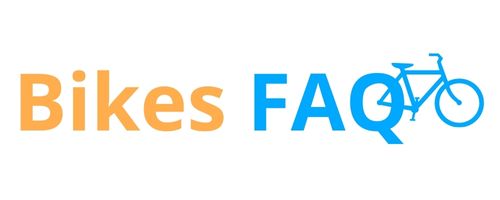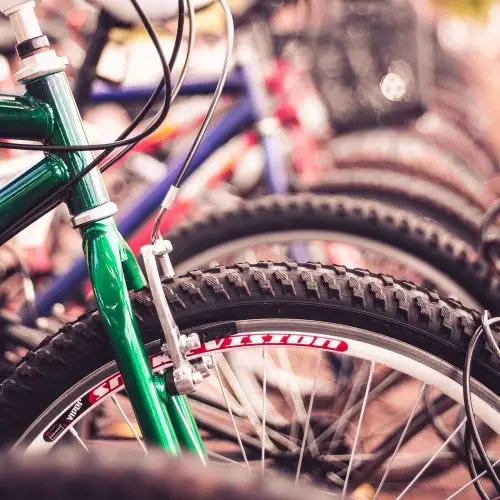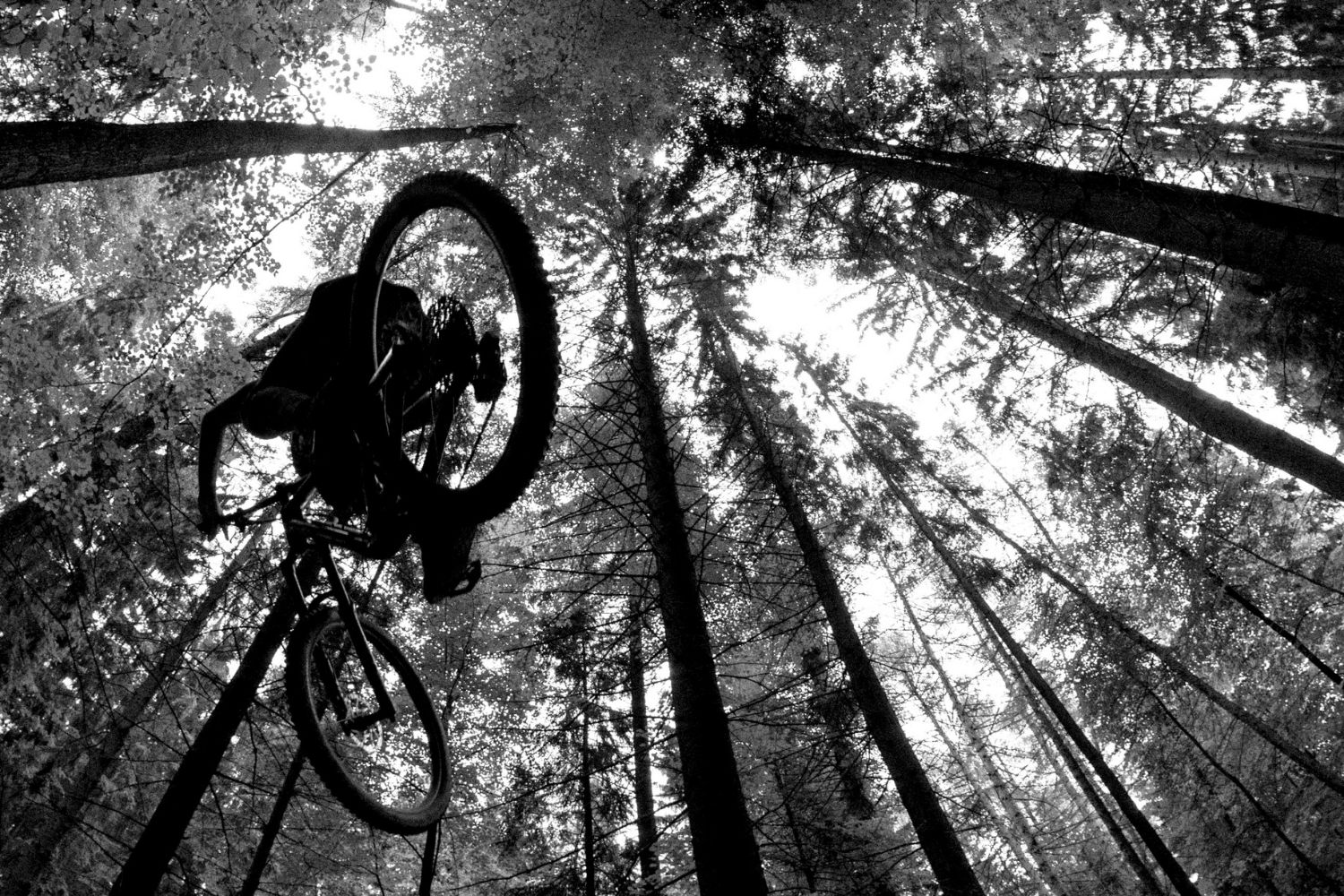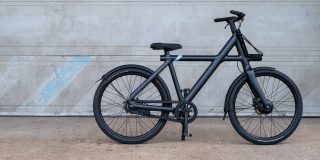You probably have noticed, that many bicycles have progressively been equipped with wider, knobbier, fatter tires over the years. Mountain bikes specifically now have some of the widest tires we have ever seen, and the growing popularity of fat-tire bikes makes this growing trend even more obvious.
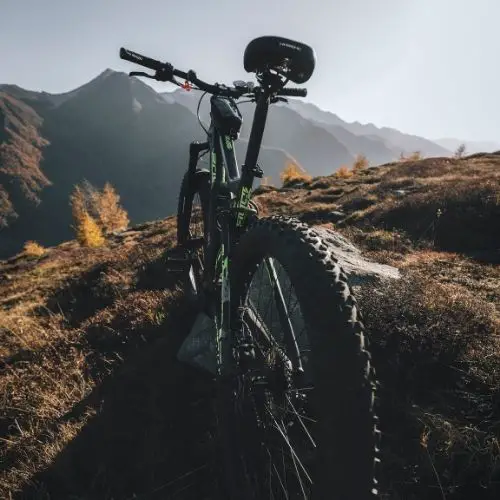
In this article, we are going to talk about the benefits, and even the drawbacks of this growing trend, and if you should think about adding fatter tires to your bicycle.
Bicycles have gotten fatter, and wider tires for quite a few reasons. Primarily, they are used so that you have more contact with the grounds. However, benefits also include the ability to air down your tires at a moment’s notice, you can have knobbier tires, and you don’t have to have suspension to still have a comfortable ride.
1. Wider tires have more contact with the ground
This results in more traction. This is especially beneficial when riding on loose surfaces, like sand, mud, or even snow. Wider tires can also help you float over these types of surfaces better than narrower ones which tend to sink more.
And if you are looking for even more traction, you can always add studs to your fat tires for winter riding conditions.
If you are looking for a more comfortable ride fat tires can also help with that. The increased contact patch of fat tires helps to absorb vibrations from the road, giving you a smoother ride.
2. You can air down your tires without worry
This is another big advantage, especially for mountain bikers. When you air down your tires (letting some of the air out to achieve a softer ride), they will still have plenty of volumes and will not bottom out as easily as narrower tires would.
This can help you maintain control and traction on rougher terrain. Now, if you are riding on the road, you might not want to air down your tires as much as you would for off-road riding. This is something that can easily be changed and adjusted at a moment’s notice with a good, portable, bicycle pump.
3. More knobs can be installed on the tires
This is especially beneficial for mountain biking as well because more knobs provide a better grip on slippery roots and rocks. More knobs also mean that the tire can be used for a longer period before it needs to be replaced.
Having knobby tires, and the additional surface area that we talked about earlier also allows the tire to grip better in corners.
4. You don’t need suspension
Fatter tires can take impact considerably better than other types of tires, because of this, you don’t need a suspension on your bike to achieve a smooth ride.
This is great news for people who are looking to save weight or just don’t want the extra complication of owning and maintaining a suspension system.
- Jumping a Fat Tire Bike: Can it be done?
- What size fat tire bike do I need?
- Mountain Bike vs Fat Tire Bike: Which one is better for you?
What are some downsides to fatter tires?
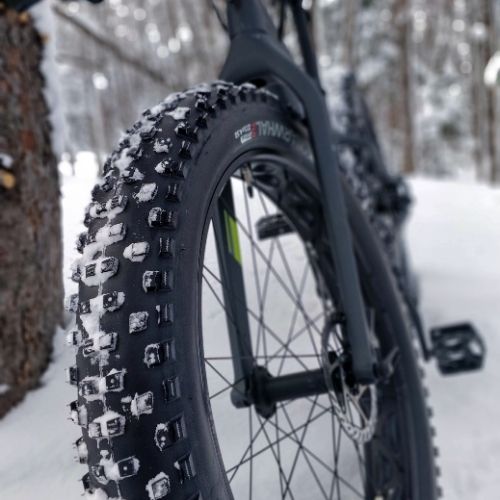
Of course, having fatter tires doesn’t always have just good thing! There are of course some downsides that you should be considering when you shop for your newest set of bicycles wheels and tires.
1. More rolling resistance
The wider and fatter the tire, the more rolling resistance it will have. This means that it takes more effort to get your bicycle moving, and this can be especially noticeable when riding uphill.
If you are someone that is looking at a tire with wider tires to ride as a mode of transportation, this is important to keep in mind! You might want to consider something like a gravel bike, that allows for less rolling resistance, better speed, and more comfort at those higher speeds.
2. Much heavier tires
Wider tires are also heavier than narrower ones, which again can be noticeable when you are carrying your bicycle up a hill or trying to accelerate. The wider, more knobs and more rubber that a tire has means you have to deal with considerably more weight.
Not only will this make it harder to pedal, but it will also affect your ability to carry it when needed, and be able to lift it onto your vehicle’s bike rack.
3. Fat tires can be punctured easier
The increased contact patch of fat tires also means that they are more susceptible to flats. If you think about it, the wider a tire, the more likely it is to roll over something sharp, causing damage to your tire.
To combat this, you can always ride with a tire liner or run tubeless tires. These are both great options that will help you avoid flats, while still being able to enjoy the benefits of fat tires.
Frequently Asked Questions
The extra weight of fat tires can make it harder to pedal, especially uphill. However, the increased contact patch and traction can help you maintain control and traction on rougher terrain.
Fat tire bikes are inherently slower than most other types of bicycles on the road. Not only are they heavier, resulting in a slower pace than other bikes, they are also geared lower for off-road usage. This means that they are slower than other bikes. That said, they are much better than most other bikes with off-road conditions, snow, and more.
Yes! Fat bikes are great for trail riding. This is one of the main things that fat tire bikes are great at. With their wide tires and sturdy frames, they can roll over the terrain with little to no problems.
Conclusion
Now that we have talked about the benefits and drawbacks of fat tires, you can make an informed decision about whether or not they are right for you. If you live in an area with lots of sand, snow, or mud, fat tires can give you the traction and floatation you need to enjoy your rides.
However, keep in mind that fat tires are heavier and have more rolling resistance, so they may not be ideal for everyone.
